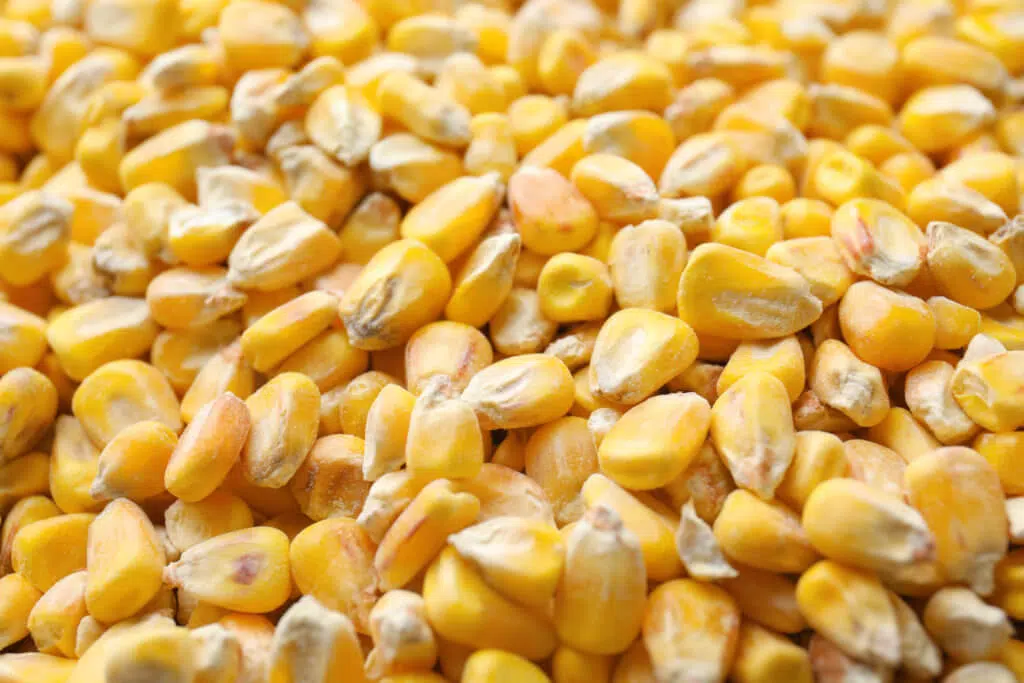Introduction
A recent study published in the Journal of Applied Animal Nutrition by Singh and Ravindran (2019) investigated the influence of the inclusion of whole maize differing in endosperm hardness on performance, nutrient utilisation, and digestive tract development of broiler chickens. Whole grain inclusion in poultry diets is common practice all over the world. This may benefit the feed industry as an alternative management practice to lower feed costs through savings in the cost of grinding, handling, and processing of grains.
Aim
The aim of the study was to determine the benefits of including whole maize differing in endosperm hardness in a broiler starter diet at a rate of 115 g/kg. The tested hypothesis was that whole or hard maize would require greater grinding activity in the gizzard, stimulating the size of this organ and its effect on performance, nutrient utilisation, and digestive tract development in broiler starters.
Material and methods
Maize cultivars used were soft, semi-hard, and hard, and were included in treatment diets either as 100% ground, or 80% ground and 20% whole. Maize samples were analysed to ensure differences in hardness using the Stenvert hardness test (soft, semi-hard, hard). Grains were ground in a hammer to pass through a 4 mm sieve, and geometric mean diameter (GMD) and geometric standard deviation (GSD) were determined. The spectra of final diet samples were determined by wet sieving. The experimental design was a 3 x 2 factorial arrangement of treatments, three maize endosperm hardness levels with diets based on ground maize or 115 g/kg whole maize replacing ground maize. A basal diet was formulated to meet or exceed the Ross 308 recommendations. Six experimental diets were developed, composed of the three ground maize cultivars with or without substitution of whole maize. The diets were then cold-pelleted through a 3 mm die.
Results
At 21 days, no significant (P>0.05) interactions between whole maize inclusion and kernel hardness were observed for weight gain, feed intake, or feed conversion ratio (FCR).

FCR was significantly (P<0.05) influenced by maize hardness. Soft maize was lower than semi-hard maize but similar to hard maize; however, there was no significant (P>0.05) difference between semi-hard and hard maize (Figure 2). Whole maize inclusion, regardless of its hardness, had no effect on AME.

At 21 days, maize hardness influenced (P<0.05) the apparent ileal nitrogen digestibility. Nitrogen digestibility was higher (P<0.05) for the diet based on soft maize compared to those fed diets based on hard and semi-hard maize. Nitrogen digestibility, however, was similar between the diets based on hard or semi-hard maize. Maize hardness tended (P=0.06) to influence ileal starch digestibility and the trends were similar to those seen for nitrogen digestibility. Whole maize inclusion had no influence (P>0.05) on the ileal nitrogen and starch digestibility and no interactions were observed.

At 21 days, no significant (P>0.05) interaction between maize hardness and whole maize was observed for the relative weight of digestive organs, except for the proventriculus. With the inclusion of whole maize, the relative weight of proventriculus was reduced with the semi-hard maize diet, but diets based on hard or soft maize were unaffected. Maize hardness and whole maize inclusion had no influence (P>0.05) on the relative weights of pancreas, liver, and spleen. However, the relative weight of gizzard was significantly higher (P<0.05) for hard and semi-hard maize compared to soft maize, and significantly higher (P<0.05) when whole maize replaced the ground maize in the diet.

At 21 days, a significant (P<0.01) interaction between maize hardness and whole maize inclusion was observed for the pH of digesta of the duodenum and jejunum. With the inclusion of whole maize, an increase in pH of duodenal digesta was observed for hard maize while pH decreased for semi-hard and soft diets. With the inclusion of whole maize, pH of digesta of jejunum was not different between the birds fed semi-hard and soft maize, but higher in those fed diets based on hard maize. Maize hardness influenced (P<0.05) the pH of the gizzard. Soft maize diets had a lower pH as compared to either hard or semi-hard maize based diets.

Conclusion
Feeding 11.5% of maize whole had no effect on live performance of broilers. However, semi-hard maize had a worse FCR at 21 days compared to either soft or hard maize. In addition, hard or semi-hard maize had worse protein digestion vs soft maize, presumably due to more starch–protein binding. Feeding hard or semi-hard maize or including whole maize in feed increased gizzard size in 21-day-old broilers. However, in this study the inclusion of whole maize had no positive effects on nutrient digestion. Soft maize diets had a lower pH possibly due to the higher rate of starch digestion.
The negative impact of maize hardness on FCR and protein digestion suggests that there is an increased opportunity for XAP response in semi-hard or hard maize. Our current research is exploring the rapid assessment of kernel hardness using NIR and will in future correlate enzyme responsiveness to the intrinsic characteristics of the maize kernel.
Intern: Poultry










